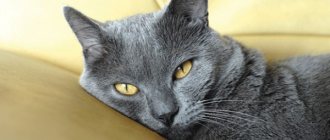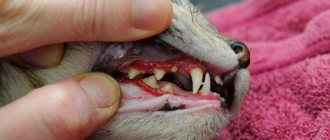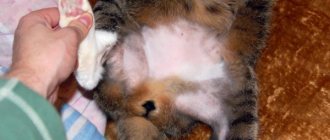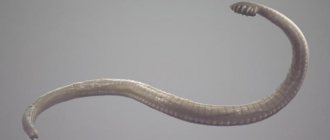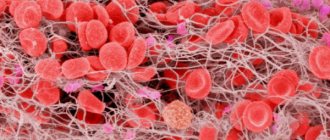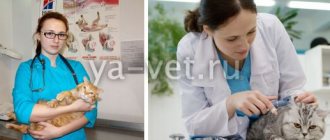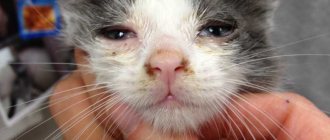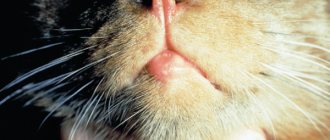Cats are able to hide the presence of problems in the oral cavity for a long time, and the independent nature of these pets does not encourage owners to look into their mouths. It is not surprising that most cats see a doctor at the very last stage of dental and gum disease.
Veterinary dentistry is a young industry, and owners simply don’t think about the fact that a cat’s teeth can be treated. A dumb animal does not complain, and therefore does not receive help. Statistics say: 3 out of 4 cats over 6 years old need dental care.
Reasons for development
The pathology affects cats of all breeds and ages. Periodontal disease occurs due to the proliferation of malignant microorganisms on the teeth and gums. The main source of the problem is lack of hygiene. This violation leads to the accumulation of food particles in the oral cavity of cats, and this leads to the formation of ideal microflora for the proliferation of bacteria. Periodontal disease in a cat develops more actively if there are small wounds in the animal’s mouth.
The disease is caused by inflammatory processes in the oral cavity. In this case, the disease acts as a side disorder, which is a complication after stomatitis or caries. Diseases of the gastrointestinal tract and poor quality diet in cats have a negative impact. Even if your pet eats expensive premium food, it needs a varied diet that includes all the vitamins and minerals. Healthy food is also necessary.
Periodontal disease in cats provokes diabetes. This is due to a decrease in immunity in the body and a deterioration in the healing of minor scratches in the mouth. Microorganisms enter the wounds and begin to destroy tissue. This is how periodontal disease develops. The cause of the disease is kidney failure. Inflammation begins due to the release of toxins. This leads to inflammation on the gums.
Causes of the disease:
- avitaminosis;
- violation of the integrity of the enamel;
- autoimmune pathologies;
- violation of the integrity of teeth;
- jaw deformation;
- genetic predisposition.
This is interesting: What to do if a cat has a heart attack?
Symptoms of the disease
Experts are convinced that the development of pathology proceeds smoothly and is characterized by the following clear signs:
- a putrid odor emanates from the pet’s mouth;
- salivation increases, the gums and oral mucosa become red and swollen;
- the pet begins to ignore solid food, preferring to eat soft, well-chewed food. In advanced cases, complete loss of appetite is possible;
- bleeding gums increases significantly;
- When the inflammatory process is acute, the cat’s teeth begin to fall out, and foci of suppuration are visible to the naked eye.
Periodontal disease and periodontitis: what is the difference?
Very often one of the names of diseases circulates among pet owners.
However, periodontal disease and periodontitis are fundamentally two different nosological units. It is important for veterinarians to know this in order to make a correct diagnosis of cats, prescribe the correct therapy and further prevention.
Distinctive features of periodontal disease and periodontitis:
- Periodontitis is an acute inflammatory disease of the gums, leading to periodontal destruction, the course of which most often does not exceed 30 days, while periodontal disease is a chronic phenomenon, developing extremely slowly, possibly with an intermediate pathological condition (gingivitis).
- The main process in periodontitis is inflammation, while, as in periodontal disease, it is degeneration and destruction of bone tissue.
- With periodontitis, without the necessary therapy, teeth fall out within 60-90 days. With periodontal disease, teeth can be preserved for several years.
Reference!
There are situations when periodontal disease is accompanied by a secondary infection and the appearance of an inflammatory process on the gums. This may somewhat complicate the differential diagnosis of pathological processes.
Stages of disease development and their symptoms
Like many diseases in veterinary medicine, periodontal disease has a gradual development of clinical manifestations. There are 4 stages in total:
- Stage 1 – the presence of only clinical manifestations. The X-ray picture of the jaw and teeth is within normal limits. In this case, the cat exhibits clinical manifestations. The gums show severe swelling and redness. When examining the teeth, tartar is detected (accumulated plaque from a long absence or improper sanitization of the cat’s mouth). Due to the active proliferation of bacterial flora, an extremely unpleasant or even putrid odor will emanate from the pet’s mouth.
Reference!
According to modern ideas of veterinarians, at the first stage of the development of periodontal disease, a diagnosis of “gingivitis” should be made, since it is impossible to differentiate these 2 conditions based on clinical manifestations.
- Stage 2 – the appearance of changes in the x-ray of the cat’s jaw. It becomes clearly visible that the amount of bone tissue has decreased by ¼ part (25%) of the required amount.
- Stage 3. Dystrophy reaches the periodontium. The volume of bone tissue is already reduced by ½ of normal. The clinical picture is also accompanied by severe bleeding of the gums, which can be easily provoked even by a light touch to the pathological gum.
- Stage 4. All pathological processes are accompanied by a purulent secondary infection. Purulent foci appear not only on the gums themselves, but throughout the animal’s entire oral cavity. The alveolar processes of teeth are subject to severe destruction. The cat's teeth are very loose and can fall out spontaneously.
Important!
Since cats are extremely patient animals, in the first stages of the development of the disease, it is very rare for owners to bring the animal to the clinic. However, in the final stages, the disease is much more difficult to treat and is much more painful for the cat to tolerate. It follows from this that you need to take care of your pet’s oral cavity.
A little anatomy
In total, a cat has 30 permanent teeth, which replace milk teeth. There are 26 temporary ones and they are replaced at the age of 5 to 7 months. Around the root of the tooth there is a special complex - the periodontium, which ensures the fixation of the crown in the jaw.
The periodontium includes the gingival socket, the periodontal ligament and the bone part of the alveolar processes and the cementum of the tooth. With periodontal disease, it is these elements that are affected, which later leads to tooth loss.
Plaque on teeth is a colony of bacteria, which provokes the onset of inflammation in the gums during periodontal disease. Nature intended that the gingival margin independently regenerates, maintaining the integrity of the periodontal complex. When the restoration balance is disturbed due to the pathological influence of microorganisms, the gum edge decreases and the tooth ends are exposed. Then the process moves to the bone part and leads to destruction and loss of teeth.
The main reason for the development of inflammatory processes in the periodontium is poor oral hygiene and the formation of plaque and tartar. In addition, there are other causes and predisposing factors:
- Inflammatory processes of the gums and mucous membranes - stomatitis, gingivitis. In this case, periodontal disease is a complication of these diseases.
- Traumatization of the mucous membrane.
- Lack of vitamins and minerals.
- Diseases of the gastrointestinal tract.
Diagnostics
A complete dental examination, including x-rays of the jaws, is carried out only under general anesthesia. In this regard, doctors prescribe examinations not only to find out and eliminate the cause of periodontal disease, but also to assess the risk of anesthesia for the patient.
At the initial appointment
- Detailed clinical and biochemical blood test (after a 10-12-hour fasting diet).
- Oral rinsing for rhinotracheitis and calicivirosis.
- Blood test for immunodeficiency virus and leukemia.
Before giving anesthesia
- Ultrasound examination of the heart (ECHO-cardiogram).
- If necessary, other studies in which the anesthesiologist sees a need: x-ray of the lungs, blood clotting test.
Examination under sedation
The dentist examines the entire oral cavity. First, dental plaque is removed with an ultrasonic scaler. After this, using a thin probe, the depth of the pockets around each tooth is determined, and the degree of recession (exposure of roots) or gum growth is assessed. Ulcers are noted on the oral mucosa (most often these are areas in contact with massive tartar). If neoplasms are noticed, a piece of tissue should be taken for analysis.
It is necessary to conduct intraoral radiography, which allows you to clearly see the condition of the roots of the teeth and the degree of destruction of the jaw bone. X-rays can detect jaw tumors or abscesses.
After diagnosis, the doctor draws up a treatment plan. Often, examination, photographs and therapeutic procedures can be done under one anesthesia.
How dangerous is the disease?
Even though this is a gum disease, the consequences for cats can be dire. For example:
- Periodontal disease in cats leads to tooth loss. Not only is this not aesthetically pleasing (after all, a cat with beautiful teeth in full is more beautiful, isn’t it?), it also makes the cat’s life much more difficult, since it becomes impossible for him to chew food.
Reference! With the development of periodontal disease, even if they have teeth, cats do not chew food, but try to swallow it whole. This is due to severe pain in the cat, which he tries to avoid in this way.
- With periodontal disease, active reproduction of various pathogenic microorganisms occurs in the oral cavity, the waste products of which are toxic to the cat’s body. This affects the general condition of the fluffy’s body.
- If the cat is old, pregnant, or has a weakened immune system for any other reason, periodontitis can lead to such a serious complication as sepsis, which can lead to the death of the animal.
Reference!
Sepsis is a severe generalized condition of the body that occurs when an infectious agent enters the blood of an animal. The literal translation from Latin is putrid blood.
It is within the power of the owners to prevent the development of complications. To do this, it is enough to take the cat to a veterinary doctor on time and strictly follow his recommendations, even if this will not be very pleasant for the pet.
This is interesting: Reasons why cats sneeze
The danger of periodontitis
Having doubts about the tactics of treating a cat’s rotten teeth, the owner wonders whether it needs to be treated. After all, the cat lived with such teeth for many years, does not complain, and eats slowly. Arguments in favor of oral sanitation.
Eliminating the source of infection
The huge mass of bacteria in the oral cavity during periodontitis is a source of chronic infection. This disrupts the functioning of the immune system, depleting it, aggravates the course of diabetes mellitus and kidney failure, and changes the blood formula.
Frequent inflammation that begins in the oral cavity spreads further, causing laryngitis and pharyngitis. It is painful for the cat to swallow, and exhaustion and dehydration quickly sets in. The respiratory tract is contaminated with bacteria, which provokes diseases of the bronchi and lungs. Periodontitis causes gastritis (inflammation of the stomach), dysbiosis of the digestive tract.
Normalization of nutrition
Periodontitis in cats often leads to loss of appetite. Owners often worry about how their pet will eat without teeth. The doctor should explain that eating with healthy, strong, toothless gums is much easier than with rotten, loose, unpaired teeth.
After effective treatment of periodontitis, it is possible to improve the nutrition and functioning of the digestive tract, prolonging the life of your furry pet.
Relief from pain
It is difficult to overestimate the effect of the procedure as the animal’s life without constant pain. Chronic suffering, aggravated by eating or licking, affects the character of the cat - it becomes nervous or aggressive.
Many owners are surprised to note that their pet changes before their eyes after being cured of periodontitis. Not every elderly cat will become affectionate and calm after oral cavity sanitation, because a lot depends on temperament. But everyone deserves to have a life that is not just long, but also comfortable.
There is an opinion that teeth and gums rot slowly and do not hurt. You should not believe this point of view. The misconception is due to the fact that the degree of pain in animals is more difficult to assess than in people - they do not speak.
Why does periodontal disease occur?
The most important reason for the occurrence of periodontal disease is the lack of proper care for the cat’s oral cavity.
Among the abundance of the latest developments in dentistry (specialized toothbrushes and pastes for cats, developed by veterinarian dentists), the presence of many salons providing teeth cleaning services, and recommendation articles on the Internet, owners still neglect the dental health of their charges.
Just like humans, cats have food particles left on their teeth, which gradually leads to the formation of plaque on their teeth. The cat's teeth turn yellow. If this sign is further ignored, food debris accumulates more and more on the teeth and gums, which leads to the formation of tartar - a hard plaque located at the junction of the tooth and gum.
This stone is a good nutrient medium for oral microflora. Bacteria actively multiply, which initially leads to gingivitis and then to periodontal disease.
However, insufficient hygiene of the cat’s mouth is not the only reason for the appearance of pathology. Periodontal disease also develops due to:
- Injuries to the mucous membranes in the oral cavity. The most trivial situations of trauma (a fight with another animal, a scratch from fish bones, etc.) can lead to periodontal disease.
- Vitamin deficiency and deficiency of micro- and macroelements. Very often, a domestic cat cannot independently maintain the mineral and vitamin balance in its body, so this responsibility is entirely transferred to the shoulders of the owner.
- Periodontal disease can often appear as a result of any malfunction of the pet’s gastrointestinal tract.
- Inflammatory diseases of the oral cavity (gingivitis, stomatitis) serve as the beginning of periodontal disease.
Attention!
If the slightest deviation in the diet or appearance of the cat’s gums and teeth appears, you should immediately show it to a veterinarian!
General characteristics of the disease
In veterinary medicine, periodontal disease is usually understood as a disease that is caused by pathogenic microbes that actively multiply in the animal’s mouth. Their pathogenic activity leads to damage to the periodontium (ligamentous apparatus of the teeth). When a pet eats food, food particles inevitably remain on its teeth, which creates ideal conditions for the appearance of colonies of harmful microorganisms. Over time, they, together with pieces of food, cover the surface of the teeth with a yellowish coating.
With each meal, plaque becomes more and more, and therefore there is little space for it directly on the tooth, and it begins to affect the gums. Its damage and accompanying inflammation is called periodontal disease by specialists. Owners should understand that this problem should never be ignored, since in its advanced form the disease can cause deformation of the cat’s jaw, which can lead to tooth loss.
How to detect periodontal disease?
No matter how paradoxical it may be, even the owner of the animal can carry out the initial diagnosis. To do this, you just need to pay attention to the cat’s behavior (how he eats, whether he chews food, whether he scratches his teeth with his paw, etc.) and examine his mouth.
In this case, clinical signs are revealed: redness of the gums, tartar, and so on. If this clinical picture is detected, the owner is obliged (if the cat’s health is dear to him) to take him to a veterinary clinic as soon as possible.
There, doctors conduct a full examination of the oral cavity and determine the location and area of the lesion. For a more accurate diagnosis of the stage of the disease, X-ray instrumental diagnostic measures are performed. Photographs of the jaw and teeth will give the doctor grounds to make a diagnosis of “periodontal disease” and at what stage the disease is developing.
The cat is also prescribed a general blood and urine test to determine the degree of generalization of the infection (leukocytosis, changes in the leukocyte formula to an inflammatory pattern, erythrocyte sedimentation rate (ESR), leukocyturia and other changes).
Symptoms
External signs of periodontal disease in a cat are noticeable at all stages of its development. Depending on the severity of the disease, doctors distinguish the following symptoms:
- Fetid odor from your pet's mouth.
- Bleeding gums even with slight pressure on them. Purulent discharge is possible.
- Redness and swelling of the oral mucosa, as well as excessive salivation.
- Decreased appetite, refusal of solid food. Some cats and cats become emaciated.
- If a cat has periodontal disease, then its teeth often begin to loosen.
- After eating, your jaw may tremble.
- Brown plaque on the crown of the tooth or on the entire surface.
Important! Some symptoms of the disease are characteristic of gingivitis and stomatitis. In order not to start the disease, if you notice the first signs, you should consult a doctor as soon as possible. This will reduce the risk of complications and speed up the healing process. Diagnosis of periodontal disease is made using a visual examination of the oral cavity, x-ray examination, and also prescribe a general or biochemical blood and urine test.
© shutterstock
List of gum diseases accompanied by inflammatory processes
The inflammatory process also occurs with various pathologies in the oral cavity.
We invite you to read: How are plants and animals adapted to life in the desert?
List of gum diseases:
- Periodontitis is a widespread inflammation that affects the gums and surrounding areas. The consequence is that the soft tissues sink, exposing the roots of the teeth, causing them to become loose.
- Periodontal disease is the destruction of the periodontium (ligamentous apparatus, tissues around the teeth). Develops slowly, with a chronic course. Gingivitis usually appears as an intermediate stage of the pathological process.
- Indolent ulcer is a disease that affects the upper lip of an animal. In this case, the formations are small and slightly concave. Inflammation gradually spreads to neighboring tissues, including the gums.
- Lymphocytic-plasmacytic stomatitis is a disease about which little information is yet known. Sharp and severe pain, wounds, and ulcers appear on the soft palate. Often accompanied by gingivitis.
Inflammation is dangerous if not treated in a timely manner. If gingivitis and any of the listed diseases are started, the pathological process will quickly spread to the pharynx, larynx, tonsils or other organs and tissues.
An early symptom that accompanies gum inflammation is an unpleasant odor from the mouth. The discovery of bad breath in a pet should immediately alert the owner. Other characteristic signs of the inflammatory process:
- increased production of saliva;
- swelling and redness of the gum surface;
- the severity of the border between soft tissues and teeth;
- decreased appetite due to pain when chewing;
- apathy, inactivity, lethargy.
Sometimes cats develop a fever and their lymph nodes become enlarged. In advanced cases, the mucous membranes turn blue, swell and hang over the teeth. Sometimes gingivitis is complicated by bleeding ulcers.
The inflammatory process is always accompanied by the proliferation of bacteria and typical symptoms (pain, swelling, redness). Funds are divided into local and internal.
List of drugs, gels and antibiotics:
- Metrogyl-Denta is a gel for relieving pain and inflammation, the product exhibits antimicrobial properties;
- Dentavedin is a gel for treating the oral cavity, relieving inflammation, and cleaning mucous membranes;
- Zubastik – dental gel for hygiene of the oral cavity, teeth, gums and treatment of tissues during inflammation;
- Chlorhexidine, Furacilin and Miramistin are local antiseptic solutions for rinsing;
- Actovegin, Levomekol - healing preparations for treating affected areas 3 times a day;
- Lugol, Vinilin - means for lubricating ulcers on the mucous membrane;
- Lincomycin, Clindamycin - antibiotics to combat pathogenic or opportunistic microflora;
- Interferon is an immunomodulator to restore immunity;
- Prednisolone is an anti-inflammatory drug.
At the initial stage of the inflammatory process, it is recommended to add folk remedies to medications. It is common to use decoctions for rinsing or lubricating from chamomile, strawberries, and oregano. Herbs help relieve inflammation, clean tooth enamel, and the surface of gum tissue. However, when using only folk remedies, the result will be barely noticeable.
Treatment
Therapy at different stages of the disease differs significantly.
In mild (1 and 2) stages, when the periodontium is not yet affected by the pathological process, doctors most often make do with conservative treatment. Its main stages:
There are situations when even in the early stages there is a need to resort to surgical intervention, but this happens extremely rarely in some special cases.
Important!
You should not remove tartar yourself, as you can damage your gums and teeth, as well as the mucous membranes of your mouth. At the veterinary clinic, specialists will do everything carefully, in sterile conditions and, if necessary, put the animal under anesthesia to make it easier for him to endure the procedure.
Unfortunately, advanced cases (stages 3 and 4) have to be treated surgically. Veterinary dentists perform the following operations:
- Removing gum atrophy and strengthening teeth in sockets. It is important to completely clean the roots of the affected teeth.
- If preservation is impossible, the teeth are removed.
IMPORTANT. After surgery, you should definitely take antibacterial drugs prescribed by your doctor!
Signs
Features indicating dental problems in cats:
- Bad breath. One of the main reasons for visiting a veterinarian. The smell from the mouth becomes unbearable, putrid in nature, and can be felt from afar (when the animal enters the room).
- Decreased appetite. The cat wants to eat, but cannot. Refuses the once-favorite “crackers”, preferring soft food.
- Strange behavior. Owners notice how the pet shakes its head, rubs its muzzle with its paw, as if trying to get something out of its mouth. Sometimes you can clearly hear teeth grinding. The cat slurps when chewing. After eating, the lower jaw may tremble.
- Constant discharge from the mouth. A sick animal will drool profusely. Blood or pus may occasionally leak from the mouth. The fur on the chin is wet all the time, the skin becomes inflamed.
- Tartar and gum inflammation. If the cat is calm, you can move the upper lip and look into the mouth without opening its mouth. It is easy to notice yellow-brown tartar - massive hard deposits that sometimes completely cover the tooth itself. The gums are bright red or bluish in color and bleed. When pressed, a pus-like gray mass may come out from under it.
All these are external signs, whereas with periodontitis, not only the gums are inflamed, but also the deep tissues around the tooth root, the dental alveolus. The jaw bone may begin to rot (osteomyelitis). The teeth themselves become loose, but since they have 2-3 long roots, they do not fall out for a long time.
Prevention
Preventing periodontal disease is as difficult as curing it.
This is due to the fact that cats have difficulty tolerating any procedures, and some factors of gum inflammation cannot be eliminated. The best prevention is an annual examination by a specialist. Then the cat will receive treatment at the stage of mild gum inflammation - gingivitis, and it will not reach periodontal inflammation. At home they provide:
Feeding
Solid or fibrous foods in a cat's diet mechanically clean the surface of the teeth. There are special foods to reduce the formation of plaque. If the animal is prone to this, it is worth practicing such a diet on an ongoing basis. This is not 100% preventive, but it can help. Specially shaped croquettes encourage the cat to chew them, and special additives bind calcium in saliva, preventing it from settling on the teeth in the form of stone:
- Royal Canin Dental;
- ProPlan Dental Plus;
- Hill's Feline Adult Oral Care.
If the owner is against industrial food, you can give the cat special treats for oral hygiene. In addition, there are special additives to food and water:
- Beaphar Mouth Wash;
- Cliny oral liquid;
- Dental Fresh;
- ProDenPlaqueOff.
Oral hygiene
Teeth cleaning
Ideally, you should brush your cat's teeth. If not every day, then at least 3 times a week. To do this, use veterinary pastes and a silicone finger brush. Wayward animals may strongly resist the procedure.
Orozyme (Orozim) gel
An alternative to daily brushing is the use of special gels that dissolve plaque. One of the effective enzyme-based drugs is Orozim.
Any preventive and therapeutic measures against periodontitis in cats will be effective only in combination with professional sanitation of the oral cavity.
How to prevent a cat from developing pathology?
- You should monitor your cat's oral cavity. You need to purchase a toothbrush and toothpaste for your cat from a veterinary pharmacy and brush his teeth regularly. Yes, he may not like it (even, most likely, this is exactly what will happen), but he will clearly like injecting antibiotics and recovering from anesthesia less.
- It is important to monitor your pet's diet. If you feed dry food, it should be premium food, as it contains substances that help prevent the formation of tartar. At the same time, cheap food, on the contrary, contains many substances that contribute to the formation of stones not only on the teeth, but also in other organs (kidneys, gall bladder). Also, premium food contains a sufficiently balanced amount of nutrients, vitamins and minerals, which has a beneficial effect on the cat’s overall health.
Attention!
Premium food must be purchased only in specialized veterinary pharmacies!
- Treat injuries and inflammatory diseases of the oral cavity in a timely manner.
Periodontal disease is a terrible disease that leads to disruption of the life and well-being of a pet. However, this is quite easy to avoid. Simply paying enough attention to a purring family member is enough. Then your cat will make you happy every day, because a healthy cat is a happy cat!
Periodontal disease in cats: treatment at home
For cats, just like for humans, keeping their teeth healthy is very important. Snow-white fangs are not only a sign of beauty, but also the health of the pet in general. If owners are not engaged in professional cat breeding and do not participate in exhibitions, then most often they do not pay attention to the condition of their pet’s teeth. It often doesn’t occur to anyone that a cat’s oral cavity needs careful hygiene. Periodontal disease often occurs in cats due to the owner's negligence. This is inflammation caused by accumulated bacteria.
How and with what to treat gingivitis
After the veterinarian has conducted all the necessary studies, it is possible to undergo therapy, which is divided into two types: conservative and surgical.
Conservative treatment is suitable for the initial stages of the disease. It consists of cleansing the animal’s mouth. Doctors clean the animal's teeth of plaque and tartar, then coat them with fluoride varnish. The gums are treated with an antiseptic. Then the veterinarian explains how to treat periodontal disease in cats.
During surgery, the veterinarian tries to eliminate gum atrophy and strengthen the tooth in the socket. The main objective of this method is to clean the tooth root. If teeth are destroyed, they are removed. After surgery, the veterinarian will prescribe antibiotics.
In the initial stage of the disease, the problem can be eliminated by regular brushing of teeth.
If, however, tartar is already present, it must be removed. Removal of small deposits is carried out using ultrasound, followed by grinding and treatment with antiseptics. Heavy deposits are removed in two stages. First, mechanical chipping of large pieces, then processing of small particles with an ultrasonic scraper.
To eliminate pain, the human gel Metragil-Denta, which has anti-inflammatory and antimicrobial properties, is recommended. The use of veterinary drugs Dentavedin and Zubastik is acceptable.
Plasmacytic-lymphocytic gingivitis
Used both in the form of tablets and in the form of ointments for local treatment. It is permissible to drop the immunomodulator interferon onto the tip of the nose; the cat will lick it off. This medicine is used to improve immunity.
Prednisone is recommended among anti-inflammatory medications. In special cases, removal of the affected tooth or a whole row is undertaken to avoid the spread of the disease.
What is it and why is this disease dangerous?
Diseases of teeth and gums often affect animals. Gingivitis in cats is one of the most common diagnoses in veterinary practice. It mainly affects animals aged 5 years and older. In rare cases, the disease occurs in young individuals.
Treatment of gingivitis at home is possible only in the initial stages, when the owner was able to detect the first signs: redness and slight swelling.
First, you need to perform oral hygiene. You can do this yourself or go to a veterinary clinic, where the animal will have tartar and plaque removed using a scaler or ultrasound. The initial stage is well treated with herbal infusions (from chamomile or oak bark).
Among pharmaceutical products, Miramistin spray has proven itself well.
The gums must be lubricated with dental gels. You can use medicines both from a veterinary pharmacy (Zubastic, Dentavedin) and from a human one - Metrogyl Denta.
In a situation where gingivitis has manifested itself clearly, herbal infusions will not help. Treatment of the animal must be carried out under the strict supervision of a veterinarian. After sanitation of the oral cavity, with advanced gingivitis, a cat often has all its teeth removed in stages; with lymphocytic gingivitis, in 9 out of 10 cases. As practice shows, treating severe forms of gingivitis without surgical intervention is impractical.
Drug therapy includes:
- Antibiotics. In the form of ointments, tablets, or injections.
- Diet food. Perhaps veterinary pates.
- Steroid ointments.
- Painkillers.
Is stomatitis contagious to humans? In fact yes. But getting it from a cat is quite problematic. However, you should not kiss the cat on the face. Wash your hands thoroughly after handling your pet.
Laboratory diagnostic methods
The X-ray method is used to diagnose periodontal disease. Pictures are taken under general anesthesia. Before administering anesthesia, the condition of the heart is examined using an ultrasound or echocardiogram. If necessary, the anesthesiologist may recommend taking an x-ray of the lungs and examining the animal’s blood for clotting.
To make an accurate diagnosis, a biochemical and clinical blood test is required. Blood is also tested for leukemia and immunodeficiency virus.
During the examination, the veterinarian determines the stage of the disease.
- The first stage is characterized by a putrid odor from the mouth, swelling and redness of the gums, and the presence of tartar.
- The second stage is manifested by a noticeable loss of bone mass up to 25%.
- At the third stage, up to 50% of bone mass is lost, and there is deep destruction in the area of the dental alveoli.
- The fourth and final stage is characterized by complete destruction of bone tissue and the presence of deep abscesses.
Although periodontal disease most often affects cats over 6 years of age, this disease is also diagnosed in young animals. Its exact stage can only be determined using an x-ray examination.
Periodontal disease in cats: causes, symptoms, treatment
Cats are able to hide the presence of problems in the oral cavity for a long time, and the independent nature of these pets does not encourage owners to look into their mouths. It is not surprising that most cats see a doctor at the very last stage of dental and gum disease.
Veterinary dentistry is a young industry, and owners simply don’t think about the fact that a cat’s teeth can be treated. A dumb animal does not complain, and therefore does not receive help. Statistics say: 3 out of 4 cats over 6 years old need dental care.
Diagnostic procedures
Timely diagnosis of the disease and prompt treatment can reduce the risk of damage to a minimum. At the first symptoms, the animal must be taken to a veterinary clinic for a full examination by a qualified specialist. Diagnostic procedures begin with a complete examination of the oral cavity, assessing the spread of inflammatory processes. In this case, the veterinarian must take into account the age of the cat, since some symptoms may occur due to age-related degeneration of the gum pockets and alveolar processes.
A more accurate diagnosis and determination of the stage of the disease will allow additional examination using X-rays. Images of the jaw will show pathological changes in its bone structure and abscess cavities. Ordinary laboratory blood sampling for general and biochemical analysis should not be ignored.

